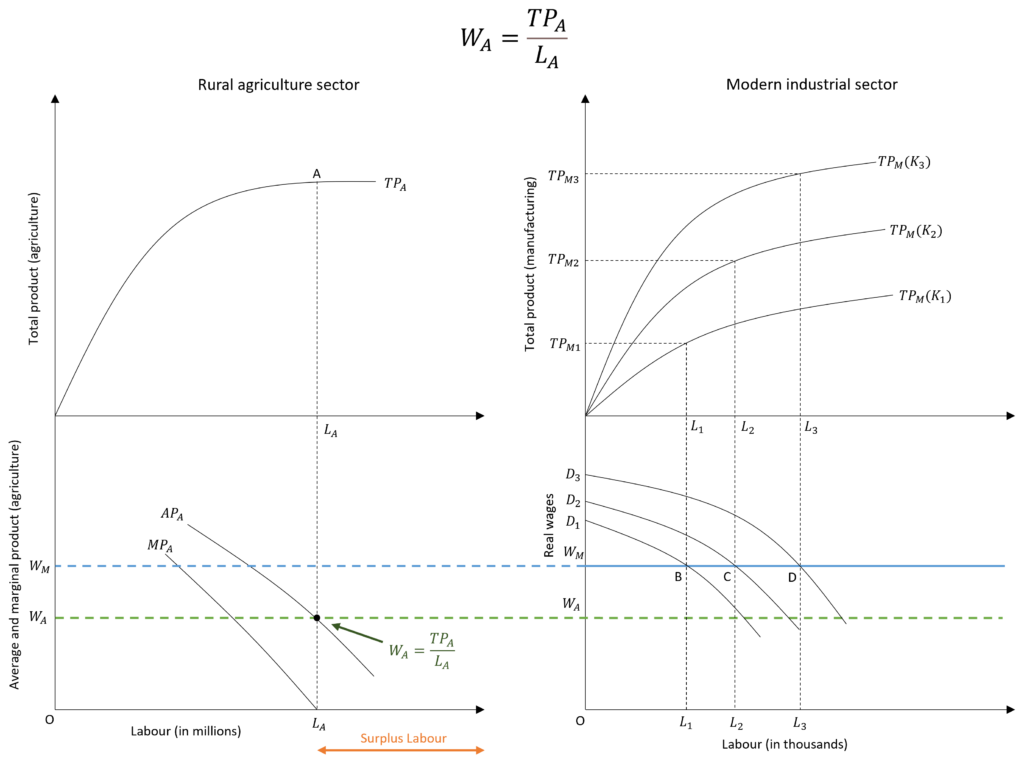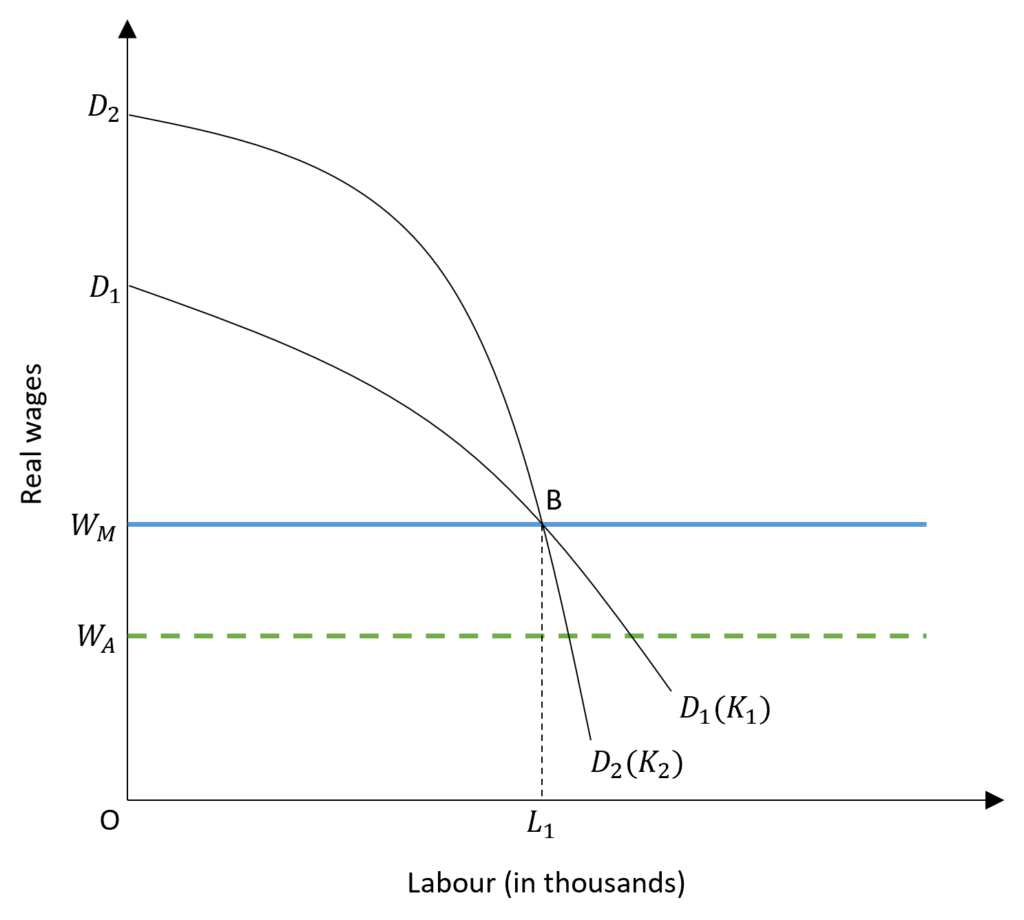Nobel Laureate Arthur Lewis introduced a model of structural change in the 1950s. The Lewis Model of Structural Change focussed on the structural transformation of a subsistence agricultural economy with surplus labour to an advanced industrial economy through shifting surplus labour to the modern sector. It is also known as Lewis’ two-sector model. This is because it is based on two sectors- the rural agriculture sector and the modern industrial sector.
Structural change models focus on the shift of underdeveloped economies from traditional agricultural production to more advanced industrial economies. Therefore, these models attempt to explain the reasons and the process by which underdeveloped economies transform. The underdeveloped economies shift their reliance from rural subsistence agriculture-based production to urban or modern industrial production.
Econometrics Tutorials with Certificates
assumptions of the Lewis model
- Surplus labour: according to Lewis, the subsistence agriculture sector consists of surplus labour. Surplus labour implies that the marginal productivity of labour is zero in this subsistence sector. That is, the total output of this sector will not fall even if surplus labour is removed from rural agricultural production. Furthermore, this surplus labour shifts to the modern industrial sector with a high productivity level. This leads to the structural transformation of the economy.
- Reinvestment of profits: Lewis assumes that the modern sector or capitalists reinvest all of their profits into the expansion of the modern industrial sector. This growth or expansion due to investment and capital accumulation absorbs more and more surplus labour from the agriculture sector.
- Fixed wages: wages in the modern sector are assumed to be constant and above the rural sector wages. Because of higher wages, the supply of labour to the modern sector from the rural sector surplus labour will be perfectly elastic.
Process of structural transformation
Rural Agriculture Sector
The first panel of the diagram below shows the rural agriculture sector. Moreover, the TPA curve depicts the total product of the rural sector. With the increase in labour inputs, the total product increases and reaches the maximum at point A. Also, the capital and rural traditional technology are constant. That is, labour is the only variable factor of production. At point A, LA quantity of labour is employed in the agriculture sector. The marginal product of labour (MPA) is zero at this point as the total product has reached its maximum. Furthermore, Surplus labour is the labour employed beyond the LA quantity of labour.
The wages are determined by the average product (instead of marginal product) as Lewis assumed that all workers contribute equally to the total product. The wage level WA is the level of wages in the rural agriculture sector.

The number of workers is shown in millions because most of the population in underdeveloped economies is concentrated in rural areas. In comparison, labour is shown in thousands in the modern industrial sector, which is less populated in underdeveloped economies.
Modern Industrial Sector
The second panel of the diagram shows the total product as well as the demand for labour (also marginal product) of the industrial sector. Additionally, the demand curves shown in the diagram are the marginal product curves of industrial labour. Lewis assumed that the labour market in the modern sector is perfectly competitive, in which case the marginal product curves are the actual demand curve for labour.
The total product curves in the industrial sector are shown by TPM(K1), TPM(K2) and TPM(K3) at different levels of capital (K1, K2 and K3). Lewis assumed that capitalists or the modern sector reinvest profits, which leads to capital accumulation. The total product curves shift upward because production shifts upwards with increasing capital stock. The marginal product of labour curves (or demand curves) are also derived from these total product curves, at different levels of capital.
The WM level of wages prevails in the modern sector and is higher than wages in the agriculture sector (WA). Because of higher wages, Lewis assumes that the supply of labour to the modern sector is perfectly elastic as surplus labour will shift from the agriculture sector.
Process
The intersection of wages (WM) with the marginal product (demand curves) determines the quantity of labour employed in the modern industrial sector. For instance, when capital is equal to K1, the curve TPM(K1) determines the marginal product curve shown by D1 (also the demand curve). WM and D1 intersect at point B, and the L1 quantity of labour is employed in the industrial sector.
At this level, the total product is equal to the area of D1BL1O and costs are equal to the total wages shown by WMBL1O. The difference between these two is the profits of the modern sector, given by the area of D1BWM. Because these profits are reinvested for capital accumulation, it increases capital stock from K1 to K2. As a result, the total product curve shifts upwards to TPM(K2) and the demand curve shifts to D2. At this level, expansion occurs and the modern industrial sector absorbs more surplus labour from the agriculture sector increasing modern sector employment to L2.
With the reinvestment of profits, this process continues further and employment increases to L3 with expansion to the K3 level of capital. This transformation process will continue till the surplus labour is absorbed from agriculture into the modern sector. Beyond this, the total product of the agriculture sector will start falling. This is because the marginal product will not remain zero after surplus labour is absorbed. The supply of labour to the modern sector will not be perfectly elastic. It will become upward sloping as wages will have to increase in order to attract workers from the agricultural sector.
criticism of the Lewis Model
- Reinvestment in capital-intensive technologies: The model assumes that all the profits in the industrial sector are reinvested. However, it does not take into account the pattern of reinvestment. For instance, capitalists may invest their profits in capital-intensive technologies instead of simply increasing the existing capital. In such a case, capital accumulation will not lead to an increase in employment. This is because more sophisticated capital will be used in production instead of more labour. Hence, production will shift upwards, but, without an increase in labour employed in the industrial sector.

- No surplus labour: Lewis assumes the existence of surplus labour in the rural agriculture sector. Research indicates that there is little or no surplus labour in rural sectors in underdeveloped economies.
- No fixed wages: another assumption of the model is that labour markets are perfectly competitive, leading to constant wages and a perfectly elastic supply of labour. In reality, however, this is untrue for underdeveloped economies because of the existence of institutional factors, such as labour unions. As a result, it has been observed that wages tend to rise in the industrial sector of underdeveloped economies.
Econometrics Tutorials with Certificates
This website contains affiliate links. When you make a purchase through these links, we may earn a commission at no additional cost to you.


